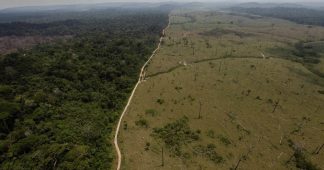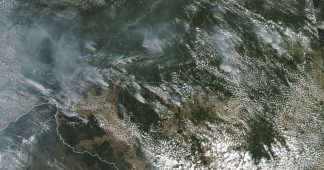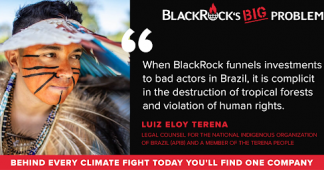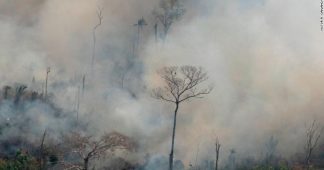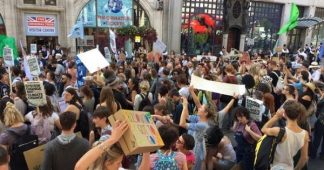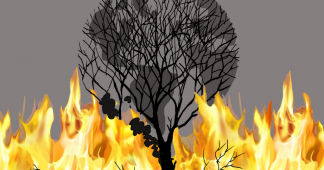The wildfires in both the Amazon—covering roughly a third of South America and stretching across all of it’s countries except for Chile, Argentina, Uruguay and Paraguay—and in the contiguous Pantanal wetland ecosystem in Paraguay and Bolívia surged in August. Simultaneous states of emergency and alerts were declared across several regions in both Peru and Brazil, while ashes descended over large areas of southern Brazil. Combined with a cold front coming from the south, the ashes blotted out the sun in the southeast of the country.
Deforestation was up by no less than 278 percent in July over the same period in 2018, while wildfires in the country were up 84 percent over last year. May through September is the dry season throughout the center of South America, and is also the time for seasonal agricultural burn-offs for both peasants and plantations.
Amazon deforestation, however, is not merely an incremental phenomenon: having lost 17 percent of its original extension, the forest is predicted to collapse if this loss reaches 25 percent, at which point irreversible damage would result in its desertification and transformation into a savannah. The Amazon forest is a huge carbon dioxide sink, with experts estimating that its biomass holds the equivalent of a hundred years of current levels of US carbon emissions.
With the desertification of the forest, most of these emissions would be released into the atmosphere, making even more difficult the already herculean task of reducing current emissions to contain global warming. Based on the average deforestation rate of recent years, experts estimated that such a collapse would come in 20 years, but the escalation of deforestation rates this year could bring such a point forward to within five years.
A prominent role in the increased fires is certainly played by global warming, which is lengthening the dry season. Its most immediate trigger, however, has been the concerted campaign by both Brazil’s far-right President Jair Bolsonaro and Amazonian state governors in pushing through deregulation and turning a blind eye to the destruction of the forest.
Bolsonaro has staffed his cabinet with climate change deniers who consider climate science a “Marxist conspiracy” and have repeatedly attacked governmental agencies charged with defense of the environment. In early August, this reached the point of firing the head of the country’s Space Research Institute (INPE) for making public, as required by Brazilian law, deforestation data. Bolsonaro claimed INPE was lying about deforestation and was publicly challenged by its head, Ricardo Galvão, who was then replaced by an Air Force colonel believed to be a Bolsonaro loyalist.
For their part, local governments have defunded the work of—and security for—rangers with the National Environmental and Renewable Resources Institute (IBAMA), exposing them to the violent retaliation of private mercenary armies working for big landowners, effectively blocking the enforcement of anti-deforestation laws.
The governor of Acre, Brazil’s westernmost state at the border with Bolivia, told supporters at a rally in late May not to pay environmental fines. Thumping his chest, he added that landowners who received fines should personally contact him. At the eastern edge of the forest, in the state of Pará, Governor Helder Barbalho enacted a law in early July vastly widening the conditions for the legalization of private ownership of public land.
Ostensibly directed at giving property rights to peasants who settled public lands after being displaced from other regions by either political or economic pressures, such laws have been used in Brazil for almost two centuries to fraudulently transfer property to big landowners. Barbalho has now scrapped the requirement that the claimant to the property actually settle it, requiring instead that merely the “intention” of settling it be presented. Estimates are that no less than 15 percent of the state’s territory will now be up for grabs.
Pará leads the growth in Amazon deforestation, and local newspapers reported on August 5 that owners of large farms on the edges of the BR-163 national road were organizing a “fire day” for August 10, reportedly to “show Bolsonaro they were willing to work” and felt “supported” by him.
The news of the accelerated destruction of the Amazon has provoked justifiable anger and revulsion in Brazil and around the world under conditions of increasing hostility to the inaction of world governments over global warming. Large demonstrations have been held in major Brazilian cities as well as across Europe and internationally.
Popular anger has been intensified by Bolsonaro’s scapegoating of the oppressed indigenous populations for the social problems plaguing the region, under conditions in which there are regular reports of environmental activists and peasant leaders being murdered by the private mercenary armies now torching the forest.
Excerpt from an article by Miguel Andrade published in WSWS.org
